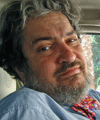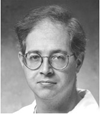Like most practitioners, I find myself attending M&M conferences at least 26 times a year. In my department, these are simply terrific conferences: well planned, meticulously researched, outstanding presentations. In most instances, I find that I would do as those presenting did. That is to say, I cannot see any reasonable way of foreseeing or avoiding the bad outcome being discussed, and am not retiring in making this known. This frustrates some who hope to actively evolve our practice, especially those who view themselves as leaders in the application of evidence to our clinical practice.
So there I was at M&M, listening to a discussion of a case, when a colleague pronounced ‘I know what happened’. This happens with astonishing regularity. I listened attentively. The commentator was far more certain of what had happened and why than was even remotely possible. Confabulation or rationalization? God only knows.
Throughout the history of medicine, we have continuously believed we have a complete understanding of the biology that underlies the vast majority of the diseases that we encounter. Whether it is earth elements, evil humors, histamine, prostaglandins, cytokines, NO, genomics, or small RNA; we have never lacked plausible and attractive explanations for the phenomena we sought to understand. Never. History continuously proves us and our paradigms wrong.
Once upon a time, syphilis was widely understood to be the great imitator. If you wave your hands long enough and hard enough, you can use syphilis to explain anything.
We have now identified many syndromes and diseases based on improved understanding of their biology, improved imaging, and improved diagnostic testing. Anaphylaxis? Prion disease? Catastrophic APLA? Schizophrenia? Carcinoid? Serotonin syndrome? Touret’s? Minamata disease? Sarcoid? Ulcerative colitis? Thyrotoxicosis? Lupus? Systemic sclerosis? Consumption? Hoards of others? All of them have been out there forever in one form or another. All syphilis.
Once upon a time, esophageal intubation was allegedly common. What about Suxx – K burns? MH? Carcinoid? Pheo? Latex allergy? Serotonin syndromes? Anaphlaxis to vehicle? Anaphylaxis to NMB? Anaphylactoid reactions(Red Man Syndrome)? Bacterial contamination of drugs? Posterior Ischemic Optic Neuropathy? Who knows what else? All of them were out there. My guess is that events associated with these were tied back to ‘esophageal intubation.’ The world was overflowing with people who ‘ knew what happened’. In most instances, our explanations were complete rubbish – rationalizations framed in the context of what we believed was a robust and complete understanding. It is only in retrospect that we can see with excruciating clarity how profoundly wrong our explications were. In most instances, invoking ‘evil humors’ would have been less wrong than most of the explanations offered.
Even now, the temptation to explain that which we do not understand utilizing frameworks(paradigms) we believe are complete and robust is insuperable. A colleague, someone whom I have enormous respect for, once told me that he truly believed that cardiac arrest during neuraxial anesthesia arose from inadequate vigilance. This, in spite of years of event investigations which refute it as even remotely plausible. Whatever it is that causes these tragedies, this much is certain: it isn’t a lack of vigilance (at least not in most of the cases).
"To see what is in front of one's nose needs a constant struggle." - George Orwell
Our hubris is also a source of tragedy over time. For example, it is now widely accepted that intrapartum asphyxia is the cause of no more than 10% of the cases of cerebral palsy in our world. The remainder, that is to say the vast majority, seem to be caused by some combination of intrauterine infection and the demise of an intrauterine twin; both of which precede delivery by weeks to months. Given this, it is unsurprising that escalating monitoring and aggressiveness in the management of fetal hypoxia had no effect on the overall incidence of cerebral palsy. In retrospect, the absolute inability to make any forward progress on this problem should have made it obvious: the vast majority of CP is not caused by intrapartum asphyxia. Once again, an invocation of ‘evil humors’ would have been less wrong than the conventional wisdom. No matter, like the British at the Somme, more resources were pushed forward to deal with the failure. More policy. More protocol. More regulation. More nurses. Higher tech monitors. More aggressive management of fetal distress. All for nought. How many times did someone at M&M utter ‘I know what happened.’? Who are the casualties here? Not just the patients. How many doctors and nurses were devastated by the idea that they might have caused CP in a child? How many careers were ruined? How many millions of dollars were paid for events that were beyond the power of those held responsible? Who is going to apologize to those practitioners? Who is going to pay them back? Who is going to make it right? (The answer to the last three: No one.)
As an educator, one of my greatest responsibilities is this: to convey to my students, residents, and fellows an appropriate degree of circumspection regarding the limits of our knowledge and understanding.
‘I know what happened.’ Bullshit.
One of the wisest men I have ever met says: ‘ I don’t know what it was, but whatever it was, it was the worst case of it I ever saw.’
As for me, I know: it’s syphilis.
 Mitch Keamy is an anesthesiologist in Las Vegas Nevada
Mitch Keamy is an anesthesiologist in Las Vegas Nevada
 Andy Kofke is a Professor of Neuro-anesthesiology and Critical Care at the University of Pennslvania
Andy Kofke is a Professor of Neuro-anesthesiology and Critical Care at the University of Pennslvania
 Mike O'Connor is Professor of Anesthesiology and Critical Care at the University of Chicago
Mike O'Connor is Professor of Anesthesiology and Critical Care at the University of Chicago
 Rob Dean is a cardiac anesthesiologist in Grand Rapids Michigan, with extensive experience in O.R. administration.
Rob Dean is a cardiac anesthesiologist in Grand Rapids Michigan, with extensive experience in O.R. administration.
One of my favorite med school professors (a surgeon and intensivist) used to say:
whenever something bad happens, we used to say "I don't know." Now we say "cy-to-kines." At least we're exercising the preservation of syllables, but the answer is really the same: we don't know.
Posted by: Chris | July 03, 2024 at 11:05 AM
Add to that list idiopathic (1970's) and autoimmune (1980's). Causes of many diseases in those days.
Also remember that we tend to explain according to what we can measure- before Banting and Best in the 1910's and 1920's, those who died of DKA were thought to need more sugar and often had glucose administered. Why? Because the only thing we could measure was their urine which contained copious amounts of sugar. These people must be losing sugar at a prodigious rate. Ergo, more sugar for them. Made perfect sense.
Posted by: cory | July 04, 2024 at 06:45 AM
Sometimes a cigar is just a cigar...
You are too generous, my dear friend. In being so, you have conflated two very different aspects of clinical care, especially as the apply to the rapid tempo/low incidence environment of anesthesiology. I assure you (as I know you to be well aware), the hoofbeat that you hear is quite frequently the horse of inattention. Indeed, for instance, most of the arrests I know of associated with local and neuraxial anesthesia (and intercurrent IV sedation) are related to unrecognized depression of respiration. How can I say this? Because I have seen (and been a party to) such depression, which was appropriately recognized and treated, before progressing to apnea. Does this mean that ALL such catastrophic events are from inattention. Heck no. (Thanks be to the clever person who came up with the intralipid scavenging of bupivacaine...) However, whatever the mechansim of catstrophic arrest in neuraxial anesthesia, it will respond 99% of the time to a tube and a vasoconstrictor, and, if there's a non-perfusing dysrhythmia, an appropriate resuscitation featuring intralipid. The sooner it's recognized, the more likely there'll be a favorable outcome.
While we ought usually to bet on the fastest horse in a crunch, we ought not to close our minds to alternate explanations for interesting/unusual occurences. I agree that we must maintain an open mind with respect to possible mechanisms that are not heretofore recognized; my favorite is one you mentioned, optic ischemia leading to monocular blindness in long prone spinal procedures. I do lots of these, and as a consequence of the (a?) proposed mechanism; mechanical stretching of the central retinal artery, I am prone to avoid prolonged pharmacologic paralysis in those patients, in order to allow resting tone in the extraocular muscles to relieve the stretch (no, I have no evidence that this helps...) I also am very cautious about induced hypotension in this (and most) settings. Another such example is the recent proposed mechanism for massive stroke during shoulder surgery in the beach chair position with induced hypotension. One of my former partners many years ago had somebody not wake up from just such a procedure. Am I sure that this was the mechanism? No. Is it plausible? Yes.
So what?
Clinically, you and I have had colleagues who, in the heat of battle, would tarry over possible low-incidence mechanisms; intellectually fiddling while Rome burns. (I'd be glad to name names, but not here...) That some folks can't "shift gears" for M&M to a more expansive appraisal should neither surprise nor disappoint us; it is human nature. That even more people aren't comfortable that there are still things we don't know, even in the little Shire of anesthesiology, is not unexpected... You and the anesthesia intesivists, by comparison, revel in the undiscovered, living, as you do, in the dark forest of critical illness, which still teems with the lions and tigers and bears of unknown mechanisms. Being old and wooly, I have been through any number of mechanisms for sepsis and acute lung injury, and have given my share of goofy experimental poisons based on those mechanisms. It will be a happy day for the afflicted and a sad day for the seekers when it is all understood and reduced to rote...
I know that you (being a first rate intelligence) know line one of this Fitzgerald quote. But given circumstances, I like line two almost as well...
"The test of a first-rate intelligence is the ability to hold two opposing ideas in mind at the same time and still retain the ability to function. One should, for example, be able to see that things are hopeless yet be determined to make them otherwise."
Thanks for another edifying post.
Posted by: mkeamy | July 06, 2024 at 11:30 AM
The contrarian in me cannot be controlled.
I'm going to dis-aggregate two phenomena here:
1. cardiac arrest associated with neuraxial anesthesia and
2. respiratory arrest associated with sedation.
First, since the era of pulse oximetry began, there have been a slew of reports of cardiac arrest during neuraxial anesthesia in patient's whose pulse oximeters never indicated that they were hypoxic. Whatever this is, it is not unrecognized hypoxia and the associated bradycardic arrest. I'm not saying that unrecognized respiratory depression doesn't happen in these cases, I claim that more than a few are caused by something else.
As for the later: respiratory arrest associated with sedation. This remains a huge problem. My guess is that the frequency of the problem and its sometimes devastating consequences will increase as more and more less experienced practitioners sedate patients for procedures. Pulse oximeters are terrific tools, but monitor oxygenation, not ventilation. Hypoxia is a late sign of hypoventilation in patients being treated with supplemental oxygen. If the patient is easy to ventilate, rescue will be easy, and it is almost certain that no harm will occur. If there is any difficulty in ventilating the patient, then rescue will be a struggle, and the chances of a bad outcome increase quite substantially. Experts watch the patient and listen to the pulse ox, amateurs watch the pulse ox and listen to the radio, incompetents..... never mind....
Posted by: Mike O'Connor | July 08, 2024 at 07:36 AM
So. I am interested in case reports associated with neuraxial anesthesia. Asystole? PEA? vtach? EHS? (exploding heart syndrome-I made that one up...)
Experts at giving aesthesia (I consider myself one, going on 60,000 hours by my reckoning) don't consciously "listen" to the pulse oximeter-they "monitor it." By which I mean, I set it to a just audible volume, and sort of consciously forget about it as I go about my tasks (line starting, charting, walking around inspecting sponges, etc); but I am hearing it; if it drops one pitch, I become aware of it. I have talked to my senior partners about this; they agree. If the room becomes noisy, I get uncomfortable almost immediately; it took me a while to figure out that I was losing the pulse ox in the room noise, although I hadn't been immediately conscious of it; now I know to just turn up the volume to compensate-anxiety alleviated. I actually use the pulse oximeter volume to modulate the room mood. If the team seems too relaxed to me, I'll turn up the volume until the whole room can hear it - it has a focusing effect. Not terribly potent; like tea rather than red bull, but it usually works, and nobody consciously notices, save the occasional really tuned-in circulator, who will look up and wink...
Along similar lines, my old tutor, Eldon Swenson, used to tell me about feeling uneasy ahead of physiologic changes in his patients; some "sixth sense." After all this time, I know what he means; sometimes, even though everything is steady, I get a funny feeling-almost always, a few minutes later something will change with the physiology; bump in BP or HR, change in rhythm, big shift in BIS. Pheromones? Since I'm by nature, a romantic, I just think it's the mystic bond.
Posted by: mkeamy | July 08, 2024 at 06:29 PM
The comment by Chris above has niggled at me for a while.
There is in fact an 'Evil Humor of the Era'
A partial list:
Histamine
Serotonin
Prostaglandins
Endotoxins
Cy-To-Kins
NO
Posted by: Mike O'Connor | September 03, 2024 at 10:04 AM